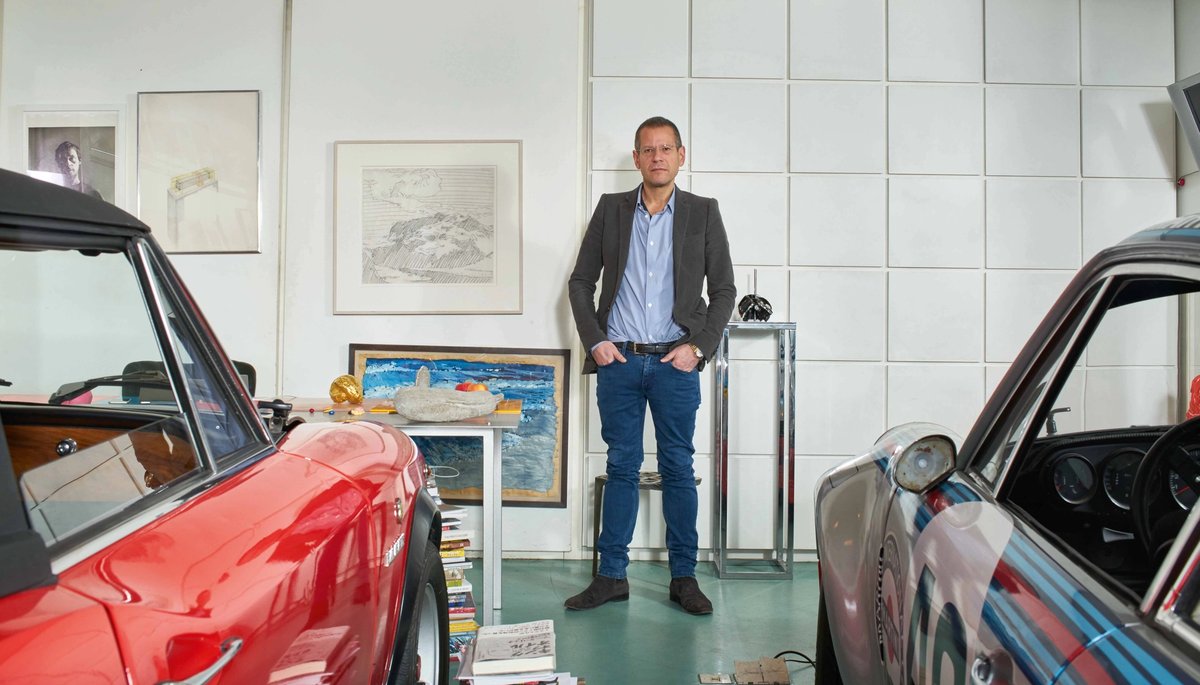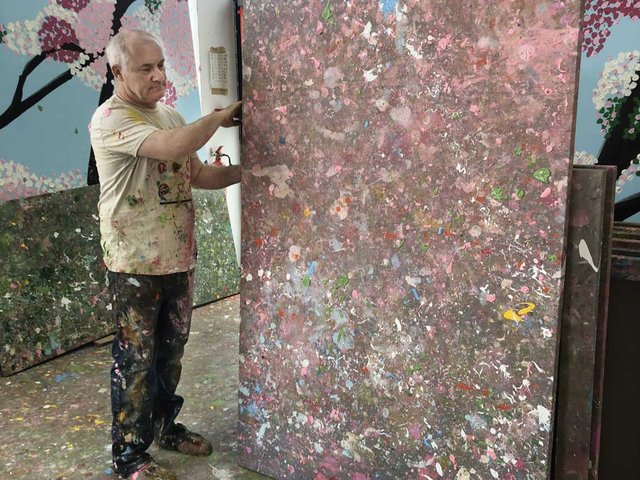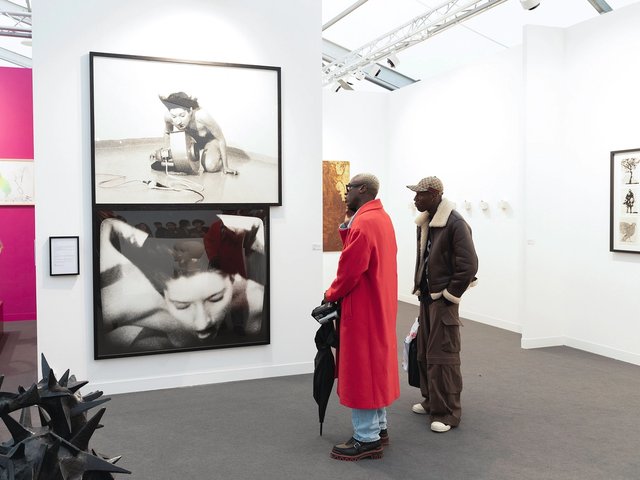The collector, dealer and self-confessed hoarder Kenny Schachter is clearing out some of his 1,000-strong art collection by selling 116 pieces through a Sotheby’s online sale. The auction, which ends tomorrow, is expected to fetch between £381,300 and £572,800.
All but one of the works have no reserve—an “act of radical generosity, if that’s not too pretentious”, he says. Bidding starts at £50. Cady Noland’s silkscreen Untitled (1991), which has been in Schachter’s collection for 28 years, has a reserve close to its low estimate of £50,000.
One of Schachter’s most coveted pieces in the sale is Genieve Figgis’s bubblegum pink painting, King and Queen (2015), which at the time of writing had already been pushed up to £38,000 (est £4,000-£6,000) by 64 bidders. Perhaps unsurprisingly for a writer and teacher, Schachter has amassed a number of text-based works by artists including Mark Titchner, Kim Gordon (of Sonic Youth fame) and Mark Flood.
The sale, Schachter says, is a “lifestyle choice”. Having assembled his vast collection over the past 30 years, he says he needs to “pare down”—as well as reduce storage costs. At its peak, Schachter says he was spending $200,000 a year on art warehouses in London, New York and Switzerland.
He recently moved back to New York with his family, where he is currently renting a property. The compulsion to buy art is still strong, however: “It’s already filled to the brim with stuff.”
Schachter has been organising exhibitions for as long as he has been buying art, often proving to be ahead of the curve. He showed Cecily Brown when she first moved to New York in 1996 and Wade Guyton in 1997 when he was still in college.
Schachter’s relationships with artists have not always been plain sailing. When he first moved to the UK in 2004, he says that he did not speak to an artist for ten years. He says: “I like art more than artists, they can get in the way.” During that period he moved into design, developing a close friendship with the late architect Zaha Hadid. He is selling a number of her Flow Vases (all est £2,000-£3,000). Other design pieces include an Azul rope chair by the Campana brothers, also estimated at £2,000 to £3,000.
As for his dealing, Schachter says he only trades dealer to dealer; “I don’t have the personality to deal with collectors,” he admits. “Most dealers studied art and love art. Every dealer that has been in the business for a considerable amount of time, like I have, has warehouses filled with art.”
Schachter has also made no secret of having become embroiled in the Inigo Philbrick saga. The younger dealer, who had galleries in London and Miami, is the subject of several lawsuits and is accused of a massive art fraud some say could be as much as $100m. Schachter says Philbrick owes him “well over $1m”, although he is not a plaintiff in any of the lawsuits. Philbrick could not be reached for comment.
Though the idea for the Sotheby’s sale came before the allegations against Philbrick surfaced in October, Schachter says: “the need for some cash took on some urgency to say the least”.
So why not continue to sell to dealers? Schachter says the online auction “is a different model, it takes out the intermediary”. All costs are levied on the buyer, although Schachter says he expects to sell most works at a loss.
Darren Leak, who manages the exhibition programme at Sotheby’s private selling gallery S|2, helped Schachter select which works to sell. “We started by choosing pieces that were based in Europe,” Schachter says, adding that a “part two” is slated for New York. “Darren has a commercial eye, while I don’t. The artists that I care about most have no market.”
Some of the more unwieldy pieces are being donated to institutions, including a sound station by Vito Acconci incorporating an archive of all of the Italian artist’s audio works, which is going to Bard College in New York. The university will also receive Schachter’s personal archive of shows he has curated and articles he has written.





